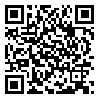Volume 8, Issue 4 (12-2019)
2019, 8(4): 35-51 |
Back to browse issues page
Download citation:
BibTeX | RIS | EndNote | Medlars | ProCite | Reference Manager | RefWorks
Send citation to:



BibTeX | RIS | EndNote | Medlars | ProCite | Reference Manager | RefWorks
Send citation to:
Ashrafzadeh M R, Naghipour A A, Khoshnamvand H, Haidarian M, Esmaeili S. Distribution Modeling of Foraging Habitats for Egyptian Vulture (Neophron percnopterus) in Kermanshah Province, Iran. Iranian Journal of Applied Ecology 2019; 8 (4) :35-51
URL: http://ijae.iut.ac.ir/article-1-991-en.html
URL: http://ijae.iut.ac.ir/article-1-991-en.html
Shahrekord University
Abstract: (8600 Views)
The Egyptian vulture, Neophron percnopterus, as a globally endangered species, is significantly affected by conflicts with human, leading to the decline of this species population. Availability of food resources is known as one of the most important factors affecting the distribution of the Egyptian vulture. In this study, we employed an ensemble modelling approach to predict the suitability of the foraging habitat for the Egyptian vulture based on seven distribution modelling algorithms. According to our results, suitable foraging habitats for this bird accounted for about 4.19% (1021.40 km2) of the study area, of which only approximately 31.92% (326 km2) was covered by the conservation areas. Livestock density (31.82%), the presence of wild ungulates (15.36%), distance to dump sites (14.77%), landcover (12.46%) and elevation (11.85%) made the highest contribution to the ensemble model of this species. Our results indicated that Egyptian vultures mainly rely on dump sites, nomadic areas and livestock farming sites, thereby reflecting the vulture's tendency to livestock carcasses. Thus, it is important to develop effective strategies for proper monitoring and managing human activities in these areas.
Send email to the article author
| Rights and permissions | |
 | This work is licensed under a Creative Commons Attribution-NonCommercial 4.0 International License. |







